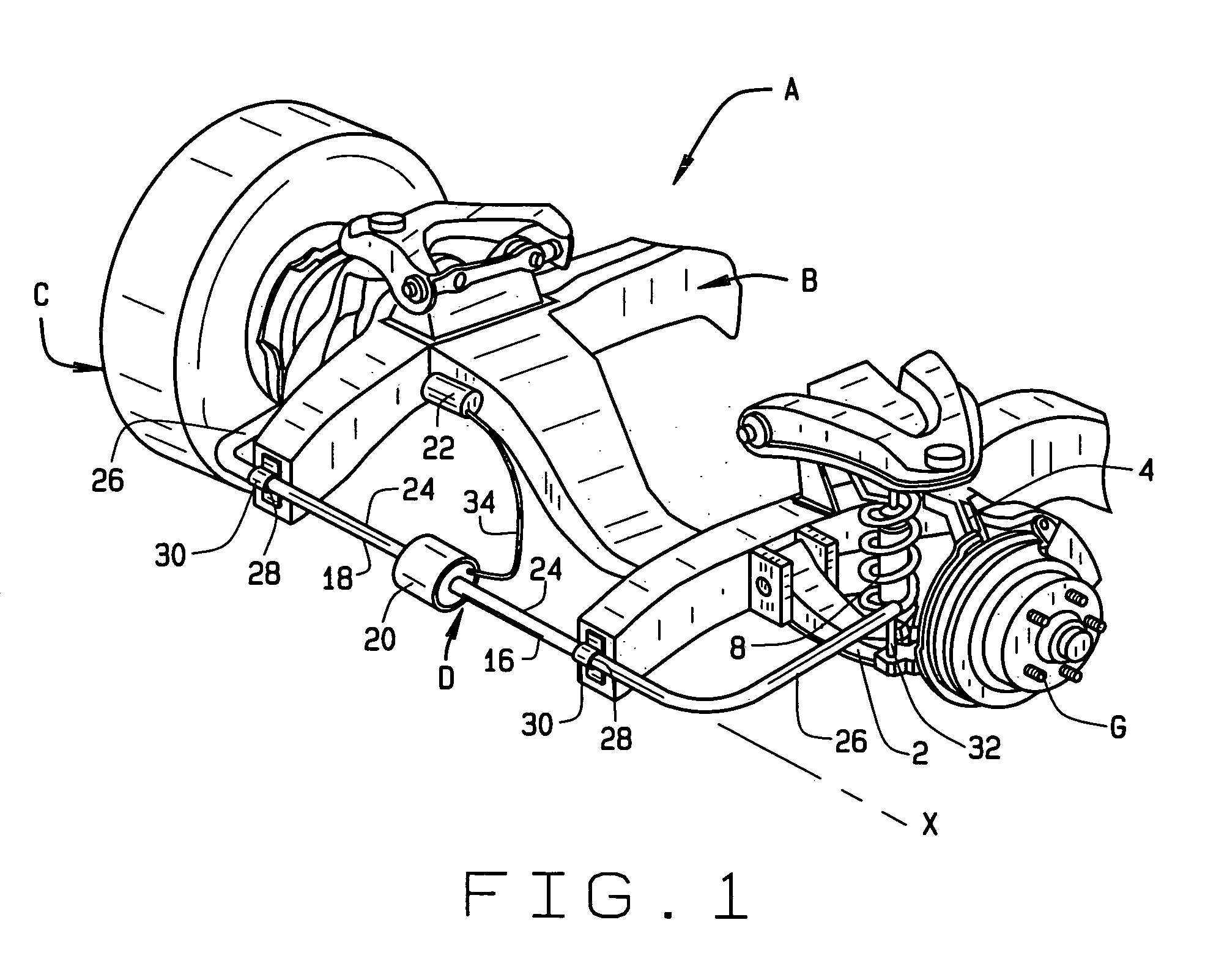Stabilizer bar having variable torsional stiffness
a stabilizer bar and variable torsional technology, applied in the direction of shock absorbers, torsion springs, transportation and packaging, etc., can solve the problems of reducing the ride, affecting the stability of the suspension bar, and being more uncomfortable than it could otherwise, and requiring high stiffness
- Summary
- Abstract
- Description
- Claims
- Application Information
AI Technical Summary
Benefits of technology
Problems solved by technology
Method used
Image
Examples
Embodiment Construction
[0011]Referring now to the drawings, an automotive vehicle has a suspension system A (FIG. 1) that is attached to a rigid structural component B, such as a frame or a unified body, of the vehicle. The suspension system A couples left and right road wheels C to the structural component B such that the road wheels C can displace vertically with respect to the structural component B. The suspension system A includes a stabilizer bar D which is attached to both sides of the structural component B and, in effect connects the left and right wheels C. The arrangement is such that when the body of the vehicle rolls—and with it the structural member B—the stabilizer bar D, being extended between the two wheels C, resists the tendency to roll, assuming of course, that it possesses a good measure of torsional stiffness. But when one of the wheels C is displaced vertically, the bar D may transmit a force to the opposite wheel C and that force will urge the opposite wheel C in the same direction...
PUM
 Login to View More
Login to View More Abstract
Description
Claims
Application Information
 Login to View More
Login to View More - R&D
- Intellectual Property
- Life Sciences
- Materials
- Tech Scout
- Unparalleled Data Quality
- Higher Quality Content
- 60% Fewer Hallucinations
Browse by: Latest US Patents, China's latest patents, Technical Efficacy Thesaurus, Application Domain, Technology Topic, Popular Technical Reports.
© 2025 PatSnap. All rights reserved.Legal|Privacy policy|Modern Slavery Act Transparency Statement|Sitemap|About US| Contact US: help@patsnap.com



